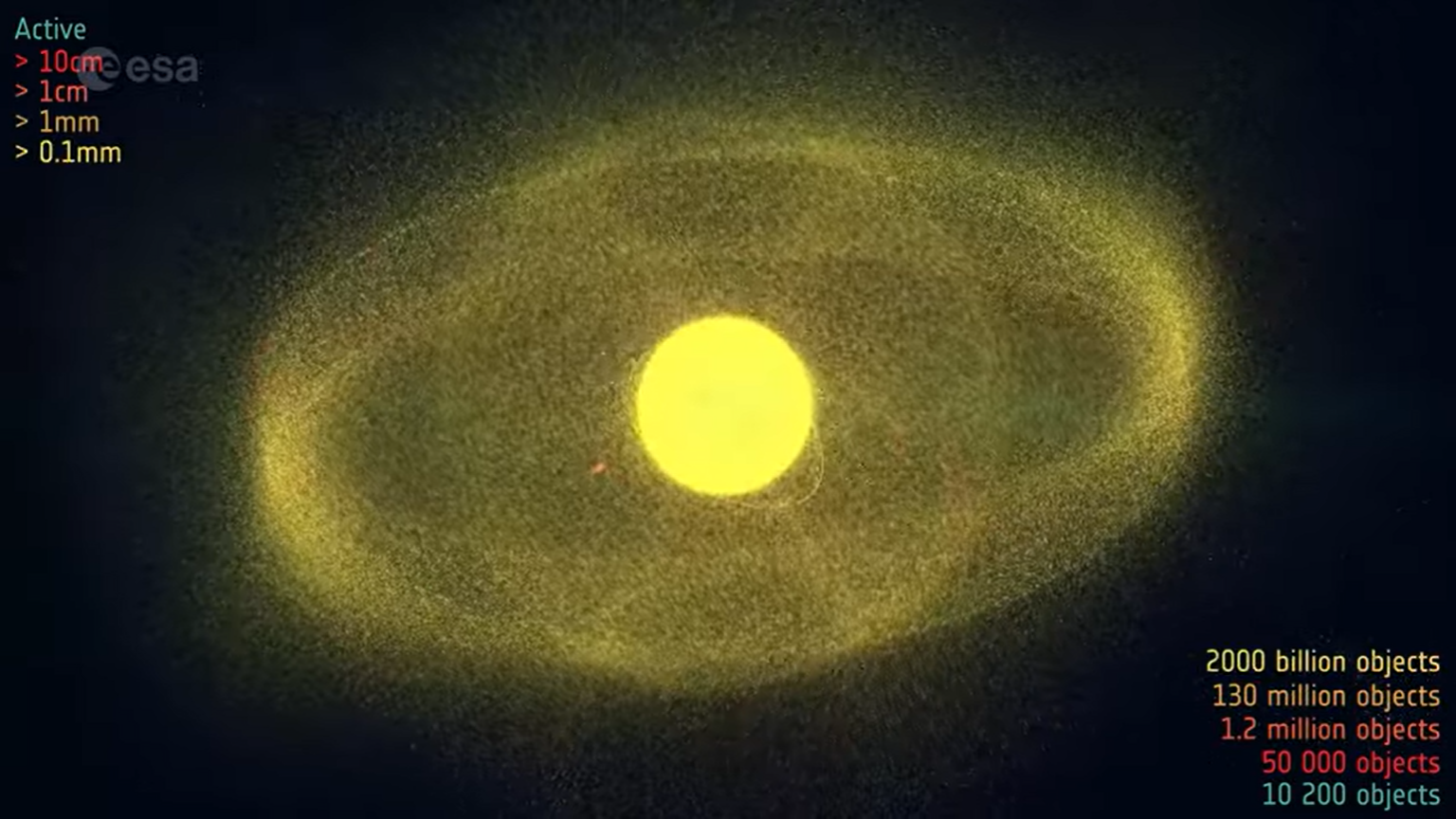Russia's 'final decision' on leaky Soyuz spacecraft at space station to come in January: reports
The Soyuz is docked to the International Space Station and it's unclear if it can bear its crew back home, following a severe coolant leak earlier in December.

Russian space officials will make their "final decision" in January about whether to let a leaky Soyuz bear its crew back to Earth, according to state media.
The Russian federal space agenc Roscosmos said it is awaiting the results of a working group investigating the findings of a severe Soyuz spacecraft leak on the International Space Station on Dec. 15 that spewed coolant into space.
Roscosmos will release "possible changes in the station's flight program in January 2023 on the basis of the working groups' findings," state media provider TASS wrote on Tuesday (Dec. 27).
Follow-up scans of the Soyuz revealed a hole in its radiator exterior and it is unclear if the spacecraft can bring home two cosmonauts and an astronaut. Since Russia cannot launch a backup craft until February, this may mean the three ISS crew members have no lifeboat in case of emergency. The cause has not yet been determined.
Related: Hole in leaky Russian Soyuz spacecraft not caused by Geminid meteor
TASS and Roscosmos maintain the cause was likely "a micrometeoroid or space debris." The hole is roughly 0.8 mm in size and an object that caused a hole of that size would not be trackable with current technology, NASA and other space agencies have said.
The space station has been subject to several close calls with space debris lately, including a Russian Fregat rocket stage that swung within less than a mile (0.4 km) on Dec. 21, forcing the ISS to dodge and NASA to delay a spacewalk by a day.
Breaking space news, the latest updates on rocket launches, skywatching events and more!
While the ISS crew is in no immediate danger from the leak, they do depend on spacecraft to come home in case of other emergency on the complex. The crew members were supposed to return home in March, but a rescue Soyuz could be ready in February, two or three weeks earlier, if required, Roscosmos has said.
Sending the affected crew members home in a SpaceX Dragon would require a separate launch and a separate set of spacesuits that are usually custom-made for astronauts or cosmonauts ahead of launch.
Elizabeth Howell is the co-author of "Why Am I Taller?" (ECW Press, 2022; with Canadian astronaut Dave Williams), a book about space medicine. Follow her on Twitter @howellspace. Follow us on Twitter @Spacedotcom or Facebook.

Elizabeth Howell (she/her), Ph.D., was a staff writer in the spaceflight channel between 2022 and 2024 specializing in Canadian space news. She was contributing writer for Space.com for 10 years from 2012 to 2024. Elizabeth's reporting includes multiple exclusives with the White House, leading world coverage about a lost-and-found space tomato on the International Space Station, witnessing five human spaceflight launches on two continents, flying parabolic, working inside a spacesuit, and participating in a simulated Mars mission. Her latest book, "Why Am I Taller?" (ECW Press, 2022) is co-written with astronaut Dave Williams.
